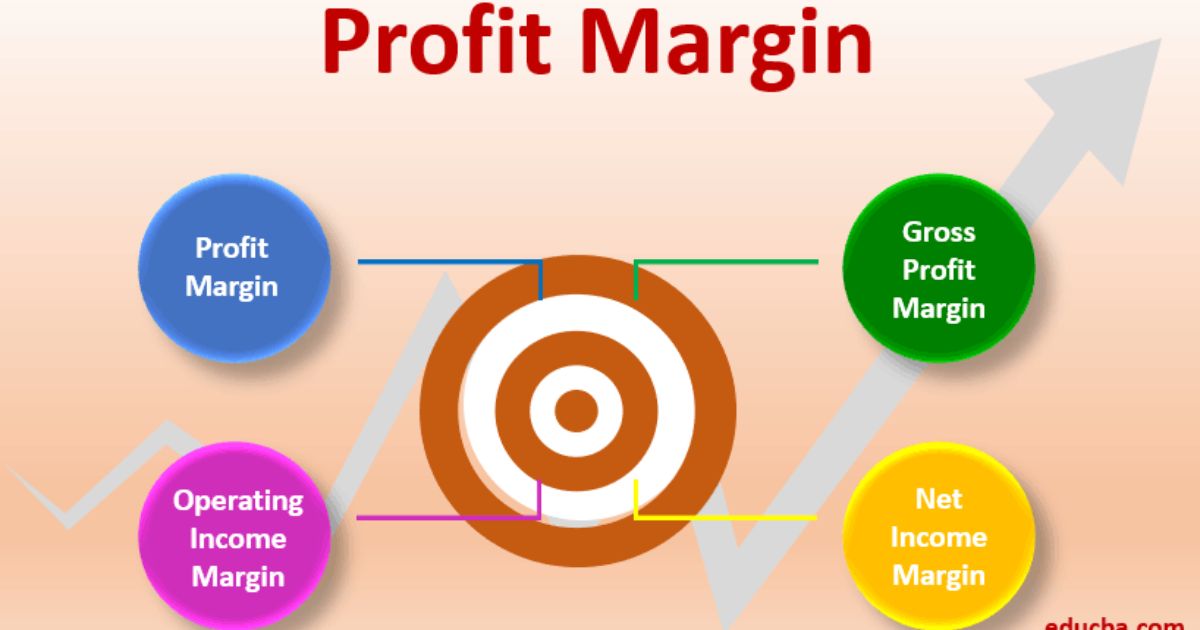In examining the profitability of small businesses, one fundamental question arises: What constitutes a reasonable profit margin? This article aims to provide an analytic exploration of this inquiry by considering various types of profit margins, including gross, operating, and net. Additionally, it will explore average profit margins across different industries and offer strategies for enhancing profitability. By employing a data-driven approach, this article endeavors to shed light on the elusive concept of a good profit margin for small businesses.
Key Takeaways
• Different types of profit margins, such as net profit margin, operating profit margin, and gross profit margin, help assess a small business’s ability to generate profits and manage costs efficiently.
• Small businesses should benchmark their profit margins against industry averages to assess competitiveness and identify areas for improvement.
• Gross profit margin indicates how efficiently a company generates profits from its core operations, while operating profit margin reflects operational efficiency and cost control.
• Net profit margin provides insights into a company’s overall profitability and efficiency in managing costs after accounting for all expenses and taxes.
Types of Profit Margin
There are several types of profit margins that are commonly used in evaluating the financial <iframe width=”560″ height=”315″ src=”https://www.youtube.com/embed/icf6urG5Evs?si=3JmmWtMCVSOG503N” title=”YouTube video player” frameborder=”0″ allow=” accelerometer; autoplay; clipboard-write; encrypted-media; gyroscope; picture-in-picture; web-share” allowfullscreen></iframe>. One such measure is the net profit margin, which is calculated by dividing net income by total revenue. This metric provides an indication of the company’s ability to generate profits after accounting for all expenses.
Another type is the operating profit margin, which shows how much profit a business generates from its core operations before considering interest and taxes. Lastly, there is the gross profit margin, which represents the percentage of revenue remaining after deducting the cost of goods sold. This indicator helps assess a company’s pricing strategy and efficiency in managing production costs. Transitioning into the subsequent section about gross profit margin, it serves as a crucial measure in analyzing a small business’s profitability.
Gross Profit Margin
One key aspect to consider when analyzing the financial performance of a business is the ratio that represents the difference between revenue and cost of goods sold. This ratio, known as gross profit margin, provides insights into how efficiently a company generates profits from its core operations. Gross profit margin is calculated by subtracting the cost of goods sold from total revenue and dividing it by total revenue, expressed as a percentage.
A higher gross profit margin indicates that a business is able to generate more profit for each dollar of sales. However, what constitutes a reasonable gross profit margin can vary depending on factors such as industry norms, market conditions, and business size. It is important for small businesses to benchmark their gross profit margins against industry averages to assess their competitiveness and identify areas for improvement.
Operating Profit Margin
The operating profit margin is a financial ratio that measures the profitability of a company’s core operations by comparing its operating income to its net sales. It indicates how efficiently a company generates profits from its day-to-day business activities, excluding any non-operating expenses or income. A higher operating profit margin suggests better operational efficiency and cost control, as more revenue is being retained from each dollar of sales.
Small businesses often face challenges in maintaining healthy profit margins due to limited resources and competition. Therefore, it is crucial for small businesses to analyze their operating profit margins regularly and compare them with industry benchmarks to ensure sustainable growth. By monitoring this ratio, small business owners can identify areas for improvement in their operations and make data-driven decisions to enhance profitability and achieve long-term success in today’s competitive market.
Net Profit Margin
To assess the profitability of a company’s overall operations, the net profit margin compares its net income to its net sales, providing insights into the efficiency with which it generates profits after accounting for all expenses and taxes. This metric is crucial for evaluating a company’s financial health and its ability to generate returns for its investors. Here are five key points about net profit margin:
• Net profit margin measures the percentage of each dollar of revenue that translates into profit.
• A higher net profit margin indicates better profitability and efficiency in managing costs.
• Different industries have varying average net profit margins due to factors like competition, market conditions, and business models.
• Comparing a company’s net profit margin over time can reveal trends in profitability or changes in business strategies.
• Net profit margin should be analyzed in conjunction with other financial ratios to gain a comprehensive understanding of a company’s performance.
Average Profit Margins by Industry

Different industries exhibit varying levels of profitability as indicated by their average profit margins, which are influenced by factors such as competition, market conditions, and business models. An analysis of average profit margins across different industries provides valuable insights into the financial performance of businesses within those sectors. For example, the telecommunications industry typically has higher profit margins due to its strong market position and limited competition.
On the other hand, the retail industry often experiences lower profit margins due to intense competition and thinner profit margins on individual products. Understanding these industry-specific trends can help small businesses set realistic expectations for their own profitability and make informed decisions regarding pricing strategies, cost management, and overall business operations. By benchmarking against similar companies in their sector, small businesses can gain a sense of belonging within their respective industries while striving for sustainable profitability.
Ways to Improve Your Profit Margin
Implementing strategic cost-cutting measures and optimizing operational efficiency are effective ways to enhance the profitability of businesses. By reducing unnecessary expenses and streamlining processes, companies can improve their profit margins and achieve sustainable growth. Here are five key strategies that businesses can employ to improve their profit margin:
• Conduct a thorough analysis of costs: Identify areas where costs can be reduced without compromising the quality or value of products or services.
• Negotiate better terms with suppliers: Seek opportunities to negotiate favorable prices, discounts, or payment terms with suppliers to lower procurement costs.
• Improve inventory management: Implement inventory control systems to minimize carrying costs, reduce stockouts, and avoid excess inventory.
• Increase pricing effectiveness: Regularly review pricing strategies based on market conditions, competition, and customer preferences to maximize revenue generation.
• Invest in employee training and development: Enhancing employee skills and knowledge can lead to increased productivity, improved customer service, and ultimately higher profits.
The Bottom Line: What Is a Good Profit Margin?
Achieving a good profit margin is essential for businesses as it reflects their ability to generate sufficient revenue and manage costs effectively. A reasonable profit margin varies by industry, but generally falls between 5% and 20%. However, it is important to note that profit margins can be influenced by factors such as competition, economic conditions, and business size.
For example, smaller businesses may have higher profit margins due to lower operating expenses. Analyzing financial statements can provide valuable insights into a company’s profit margin. Key metrics to consider include gross profit margin (gross profit divided by revenue) and net profit margin (net income divided by revenue). Comparing these ratios with industry benchmarks can help businesses assess their profitability and make informed decisions regarding pricing strategies, cost control measures, and overall financial performance.
Conclusion
In conclusion, determining a reasonable profit margin for a small business depends on various factors such as industry, competition, and overall financial goals. Analyzing different types of profit margins, including gross profit margin, operating profit margin, and net profit margin, can provide valuable insights into the financial health of the business. Additionally, benchmarking against average profit margins within the industry can help gauge performance. To improve profit margins, businesses can focus on cost reduction strategies and increasing revenue streams. Ultimately, aiming for a good profit margin ensures sustainable growth and profitability in the long run. As Benjamin Franklin once said, “A penny saved is a penny earned.”








